
Simple NiCd Battery Charger
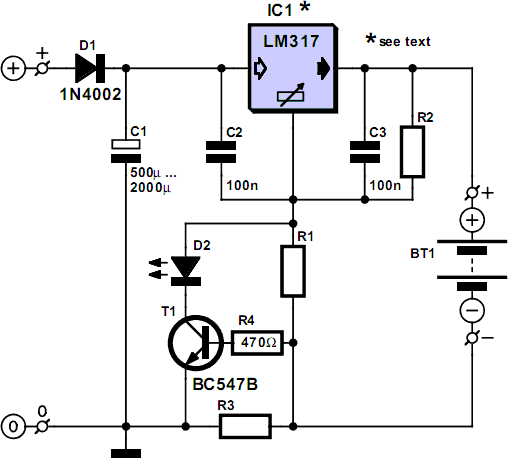
A simple NiCd charger can be constructed using commonly available components and an inexpensive LM317 or 78xx voltage regulator. It incorporates a current limiter made up of resistor R3 and a transistor, allowing it to charge multiple cells until a fully charged voltage determined by the voltage regulator is reached. The circuit indicates whether charging is active or if the cells have reached a fully charged state. If the storage capacitor (C1) is not included, the charger operates in a pulsed charging mode, allowing for a higher charging current while maintaining the same control characteristics. The circuit operates simply: when the cells are not fully charged, a charging current flows from the voltage regulator, limited by resistor R3 and transistor T1. The maximum current is defined by the formula Imax = (0.6 V) / R3. For a maximum current of 200 mA, R3 is set to 3 ohms. An LED indicates when current limiting is active, signifying that the cells are not fully charged. The potential on the reference lead of the voltage regulator increases by approximately 2.9 V due to the voltage across the LED, necessitating a minimum number of cells for charging. For an LM317, the voltage between the reference lead and output is 1.25 V, requiring at least three cells (3 × 1.45 V > 2.9 V + 1.25 V). For a 78xx regulator, which has a voltage drop of around 3 V (plus 2.9 V), at least four cells are needed. As the cells approach full charge, the current gradually decreases, leading to the deactivation of the current limiter and the LED turning off. In this state, the voltage on the reference lead of the regulator is determined solely by the R1/R2 voltage divider. For a 7805 regulator, R2 is selected to allow a current of 6 mA through it. Combined with the regulator's current (approximately 4 mA), this results in around 10 mA flowing through R1. If the voltage across R1 is 4 V (9 V - 5 V), R1 is calculated to be 390 ohms. This configuration sets the end-of-charge voltage to approximately 8.9 V. The current through the regulator may vary based on the manufacturer and load, necessitating adjustments to the value of R1. The storage capacitor's value should correspond to the selected charging current, and it can be omitted for pulsed charging.
The circuit design for this NiCd charger is straightforward, providing a reliable method for charging nickel-cadmium batteries. The use of the LM317 or 78xx voltage regulator enables precise control over the output voltage and current, ensuring safe charging of the cells. The current limiting feature, implemented with resistor R3 and transistor T1, is crucial to prevent overcharging and potential damage to the cells. The LED indicator serves as a visual cue for the user, signaling the charging status and preventing user errors during operation.
The voltage divider formed by resistors R1 and R2 is essential for setting the reference voltage of the regulator. The careful selection of these resistors allows for fine-tuning the charging parameters, maintaining optimal performance across different battery configurations. The ability to adjust R1 based on the regulator's current characteristics ensures adaptability to various charging scenarios.
In applications where space and component availability are limited, this charger design stands out due to its simplicity and effectiveness. The option to omit the storage capacitor allows for flexibility in charging methods, accommodating different user requirements, such as pulsed charging for higher current applications. Overall, this NiCd charger circuit offers a practical solution for battery charging needs, combining efficiency and functionality in a compact design.A simple NiCd charger can be built using junk box` components and an inexpensive LM317 or 78xx voltage regulator. Using a current limiter composed of R3 and a transistor, it can charge as many cells as desired until a fully charged` voltage determined by the voltage regulator is reached, and it indicates whether it is charging or has reached the f
ully charged state. If the storage capacitor (C1) is omitted, pulsed charging takes place. In this mode, a higher charging current can be used, with all of the control characteristics remaining the same. The operation of the circuit is quite simple. If the cells are not fully charged, a charging current flows freely from the voltage regulator, although it is limited by resistor R3 and transistor T1.
The limit is set by the formula Imax ‰ (0. 6 V) G· R3 For Imax = 200 mA, this yields R3 = 3 . The LED is on if current limiting is active, which also means that the cells are not yet fully charged. The potential on the reference lead of the voltage regulator is raised by approximately 2. 9 V due to the voltage across the LED. This leads to a requirement for a certain minimum number of cells. For an LM317, the voltage between the reference lead and the output is 1. 25 V, which means at least three cells must be charged (3 G— 1. 45 V > 2. 9 V + 1. 25 V). For a 78xx with a voltage drop of around 3 V (plus 2. 9 V), the minimum number is four cells. When the cells are almost fully charged, the current gradually drops, so the current limiter becomes inactive and the LED goes out.
In this state, the voltage on the reference lead of the regulator depends only on voltage divider R1/R2. For a 7805 regulator, the value of R2 is selected such that the current through it is 6 mA. Together with the current through the regulator (around 4 mA), this yields a current of around 10 mA through R1.
If the voltage across R1 is 4 V (9 V 5 V), this yields a value of 390 . The end-of-charge voltage can thus be set to approximately 8. 9 V. As the current through the regulator depends on the device manufacturer and the load, the value of R1 must be adjusted as necessary. The value of the storage capacitor must be matched to the selected charging current. As already mentioned, it can also be omitted for pulse charging. 🔗 External reference
The circuit design for this NiCd charger is straightforward, providing a reliable method for charging nickel-cadmium batteries. The use of the LM317 or 78xx voltage regulator enables precise control over the output voltage and current, ensuring safe charging of the cells. The current limiting feature, implemented with resistor R3 and transistor T1, is crucial to prevent overcharging and potential damage to the cells. The LED indicator serves as a visual cue for the user, signaling the charging status and preventing user errors during operation.
The voltage divider formed by resistors R1 and R2 is essential for setting the reference voltage of the regulator. The careful selection of these resistors allows for fine-tuning the charging parameters, maintaining optimal performance across different battery configurations. The ability to adjust R1 based on the regulator's current characteristics ensures adaptability to various charging scenarios.
In applications where space and component availability are limited, this charger design stands out due to its simplicity and effectiveness. The option to omit the storage capacitor allows for flexibility in charging methods, accommodating different user requirements, such as pulsed charging for higher current applications. Overall, this NiCd charger circuit offers a practical solution for battery charging needs, combining efficiency and functionality in a compact design.A simple NiCd charger can be built using junk box` components and an inexpensive LM317 or 78xx voltage regulator. Using a current limiter composed of R3 and a transistor, it can charge as many cells as desired until a fully charged` voltage determined by the voltage regulator is reached, and it indicates whether it is charging or has reached the f
ully charged state. If the storage capacitor (C1) is omitted, pulsed charging takes place. In this mode, a higher charging current can be used, with all of the control characteristics remaining the same. The operation of the circuit is quite simple. If the cells are not fully charged, a charging current flows freely from the voltage regulator, although it is limited by resistor R3 and transistor T1.
The limit is set by the formula Imax ‰ (0. 6 V) G· R3 For Imax = 200 mA, this yields R3 = 3 . The LED is on if current limiting is active, which also means that the cells are not yet fully charged. The potential on the reference lead of the voltage regulator is raised by approximately 2. 9 V due to the voltage across the LED. This leads to a requirement for a certain minimum number of cells. For an LM317, the voltage between the reference lead and the output is 1. 25 V, which means at least three cells must be charged (3 G— 1. 45 V > 2. 9 V + 1. 25 V). For a 78xx with a voltage drop of around 3 V (plus 2. 9 V), the minimum number is four cells. When the cells are almost fully charged, the current gradually drops, so the current limiter becomes inactive and the LED goes out.
In this state, the voltage on the reference lead of the regulator depends only on voltage divider R1/R2. For a 7805 regulator, the value of R2 is selected such that the current through it is 6 mA. Together with the current through the regulator (around 4 mA), this yields a current of around 10 mA through R1.
If the voltage across R1 is 4 V (9 V 5 V), this yields a value of 390 . The end-of-charge voltage can thus be set to approximately 8. 9 V. As the current through the regulator depends on the device manufacturer and the load, the value of R1 must be adjusted as necessary. The value of the storage capacitor must be matched to the selected charging current. As already mentioned, it can also be omitted for pulse charging. 🔗 External reference
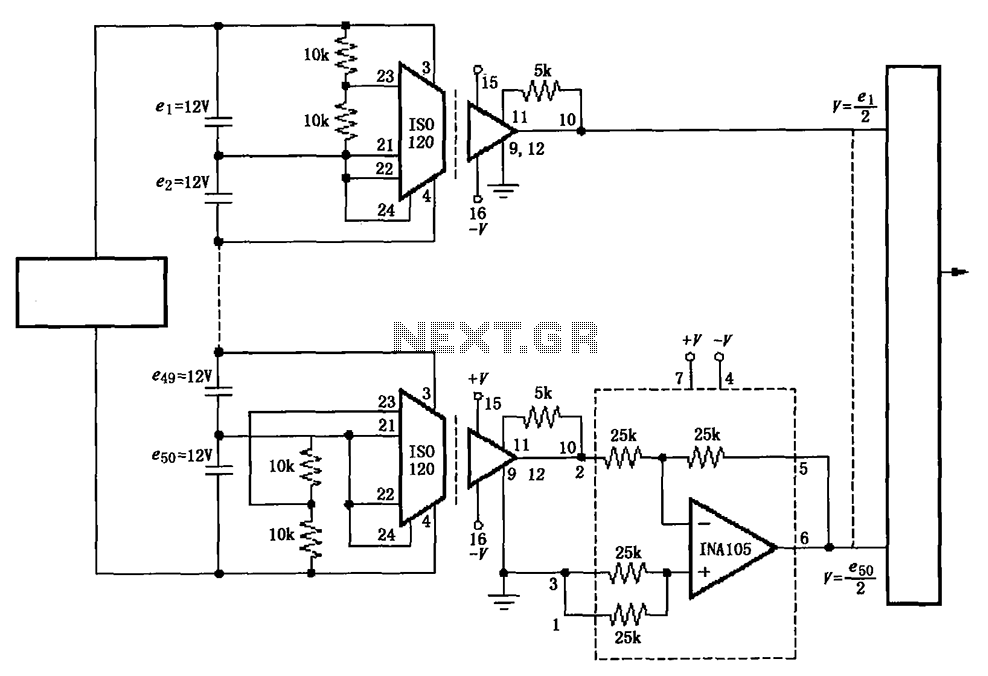
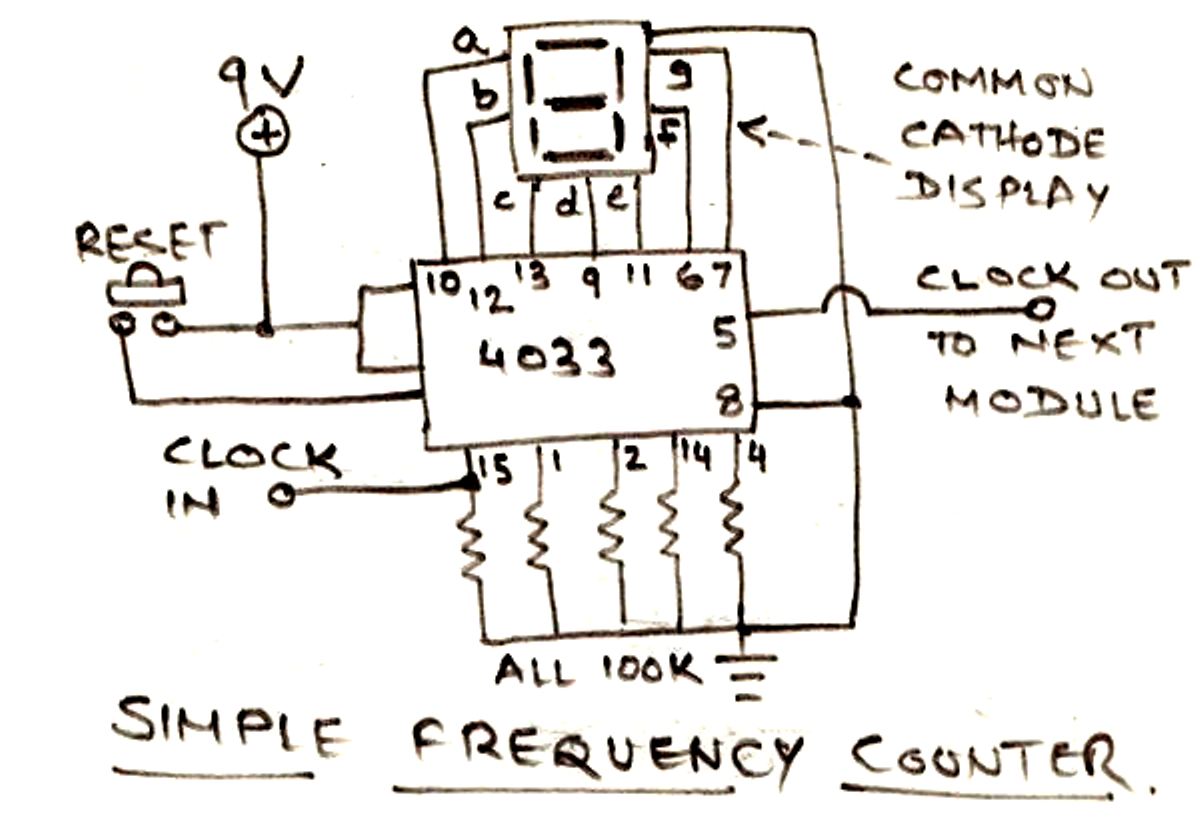
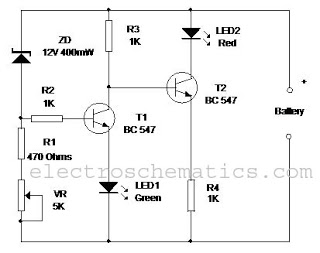
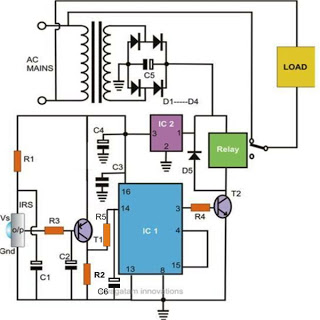
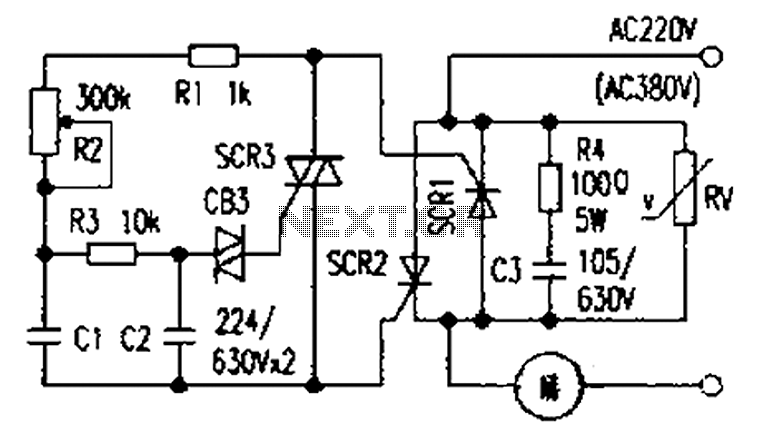
%2BCircuit%2Bdiagram%2Busing%2BCD4047%2Band%2BIRFZ44%2Bpower%2BMOSFET.png)